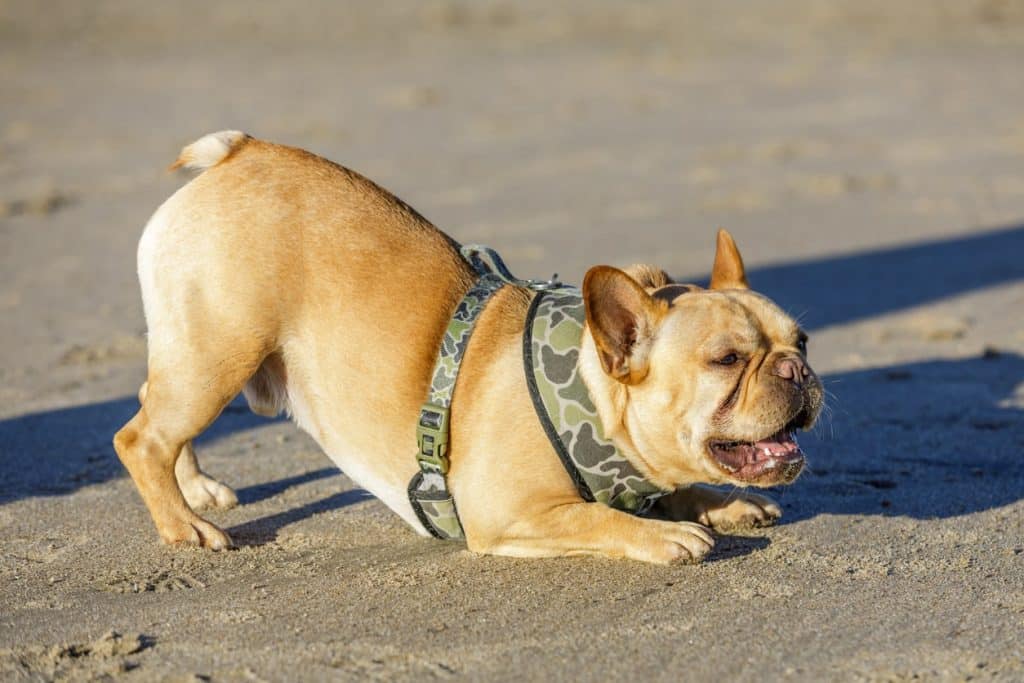Watching dogs’ body language can reveal a lot about their feelings. One way they talk to us is by wagging their tails. Dogs wag their tails when they’re happy to see us, afraid, alert, or uncomfortable, says Melissa McCormic, a senior manager of training and behaviour at Best Friends Animal Society.
We spoke with experts about how to read a dog’s tail wag, the different tail wags and what they mean, common tail-wagging myths, and more.
How to Read a Dog’s Tail Wag
Even though we often think tail wagging means a dog is happy, it can mean different things depending on what’s going on.
When watching your dog’s tail wag, pay attention to these things:
- tail position
- wag speed
- where the tail is held
Additionally, McCormic says some dogs naturally have higher tails or may not have a tail at all, so keep that in mind. It’s important to look at how the tail is positioned (tucked, held high, or in the middle), how fast it’s wagging, and where the tail is being held.
These body language clues can tell us if a dog feels scared, calm, happy, or unsure.
What Are the Different Tail Wags & What Do They Mean?
| Tail Wag Meaning | What It Looks Like |
| Happy | High, wide, fast |
| Super excited | Extra fast |
| Relaxed | Normal position, slight wag |
| Alert | Straight out, slight wag |
| Submissive | Wag while tucked between legs |
| Aggressive | Tail arched over back while wagging |
| Anxious | Wag slightly to the left |
| Friendly | Wag slightly to the right |
How Do Dogs Without Tails Communicate?
Dogs without tails can still show how they feel using their body. Instead of wagging, they might wiggle their whole body, says Maddie Messina, a dog behaviour expert and founder of Paws for Thought Dog Training.
Whether a dog has a tail or not, it’s important not to focus only on the tail. For dogs with short or no tails, look at other parts of their body to understand how they feel. Messina says to look at their:
- ear positions
- facial expressions
- body posture
- distance from you
These clues and dog speak can help you understand their feelings.

iStock/yhelfman
5 Tail Myths Debunked
Here are some common myths about why dogs wag their tails:
1. A wagging tail always means a pup is happy
Many people think a wagging tail means a dog is happy, but that’s not always true. Messina says dogs wag their tails when they have strong emotions. These emotions can be happy or not. For example, a dog that doesn’t like other dogs might wag their tail fast before barking and lunging.
To understand what a tail wag means, look at the dog’s whole body and what’s happening around them.
- Are their ears and body posture leaning forward?
- Are they holding their tail high and wagging it quickly?
- Is their mouth closed?
- Do they have a history of barking and lunging at other dogs when they see them on lead?
If yes, this indicates that tail wagging isn’t because a dog feels happy. Instead, it could be a sign of reactivity.
2. All dogs wag their tails the same way
Dogs don’t all wag their tails the same way because their tails are shaped differently. But, Messina says some studies show dogs wag their tails to the left or right based on how they feel.
Other dogs can tell if a wag is left or right and may react differently.
3. A dog’s tail wag doesn’t change with age
Since a dog’s tail is connected to their spine, its movement may change as they get older, especially if they have arthritis or joint problems.
Big wags might turn into smaller wags as a dog ages.
4. A dog can control their tail wag
It’s hard to know if dogs can control how they wag their tails. Messina says she doesn’t think her dog knows that she wags her tail in big circles when greeting family but wags it smaller when greeting strangers.
She’s never seen anyone train a dog to wag their tail on command. Some dogs even hurt their tails from wagging too hard (called happy tail), showing they may not be able to control it like other body movements.
5. Dogs wag their tails when they want to play
Some dogs wag their tails when they want to play, but that’s not always true. Messina recommends looking for other signs like:
- A ‘play bow’ (when your dog drops to their elbows and keeps their butt raised)
- Loose, bouncy body language
- Inability to look away from the potential playmate



